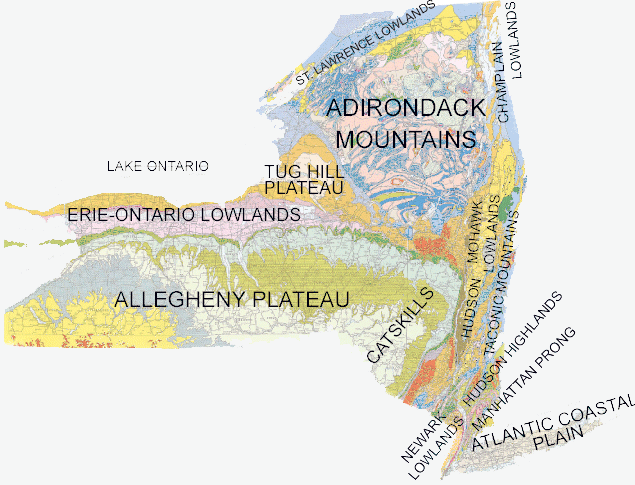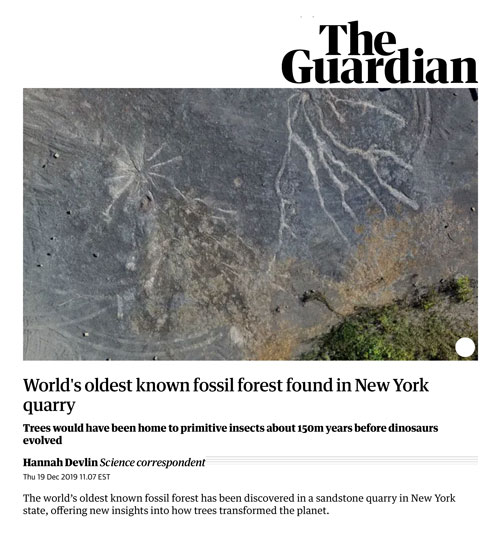Shallow Seas
During the Paleozoic Era, parts of the region were uplifted to form the Allegheny Plateau (a physiographic section of the larger Appalachian Plateau province). Other areas nearby were flooded by shallow seas depositing sedimentary rock sequences. Stream erosion crossed the plain and carved away all of the rock except the harder stone of the higher peaks of the Catskill Mountains, which all have about the same elevation today. Much of the rocks in the Catskill Mountains were deposited by rivers near sea level, and are composed of Devonian-aged sedimentary bedrock (sandstones, shales and conglomerate formed in ancient river valleys). The green and red striated clays visible on the edges of stream banks are ancient glacial lake deposits eroded from siltstones and shales that contain fossil remains of plants, clams, and insects from the Devonian Period. Recently discovered in a limestone quarry in Cairo NY, within the Catskills, are remnants of the oldest known fossil forest in the world at 386 years old.
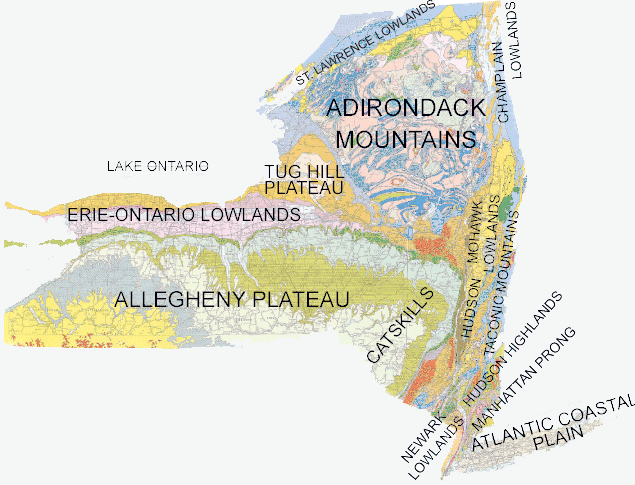
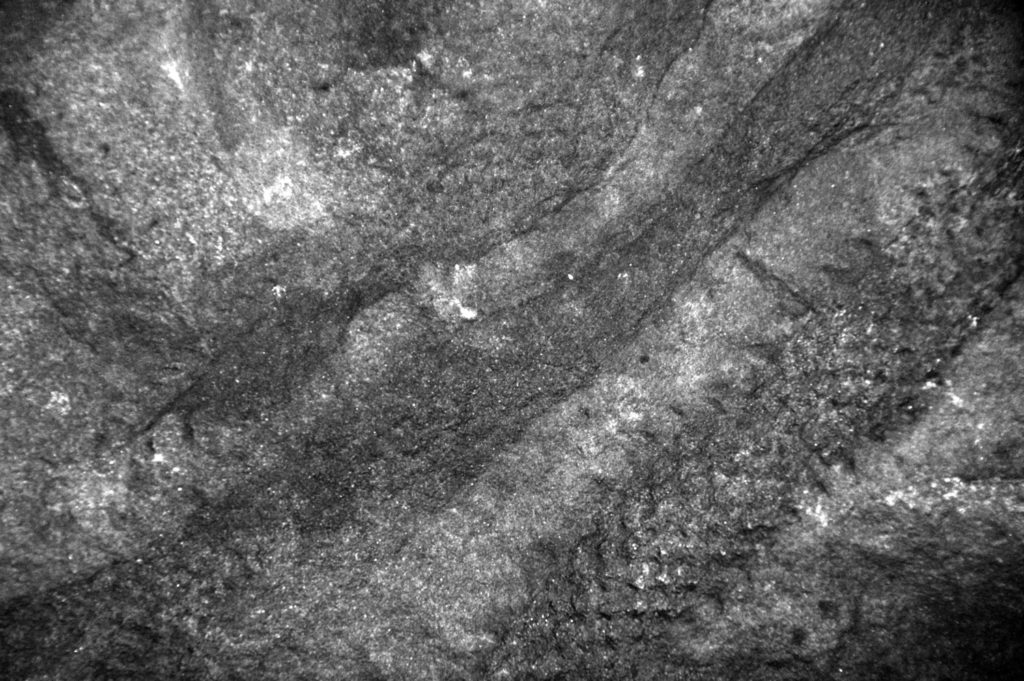
The Devonian was the key time interval during which land plants flourished and Earth experienced its first “greening” of the land. The earliest land plants were small and simple and probably remained close to bodies of water. By the Late Devonian, land plants had evolved large, tree-sized bodies and the first-ever forests appeared. Image: James St. John / Creative Commons License.
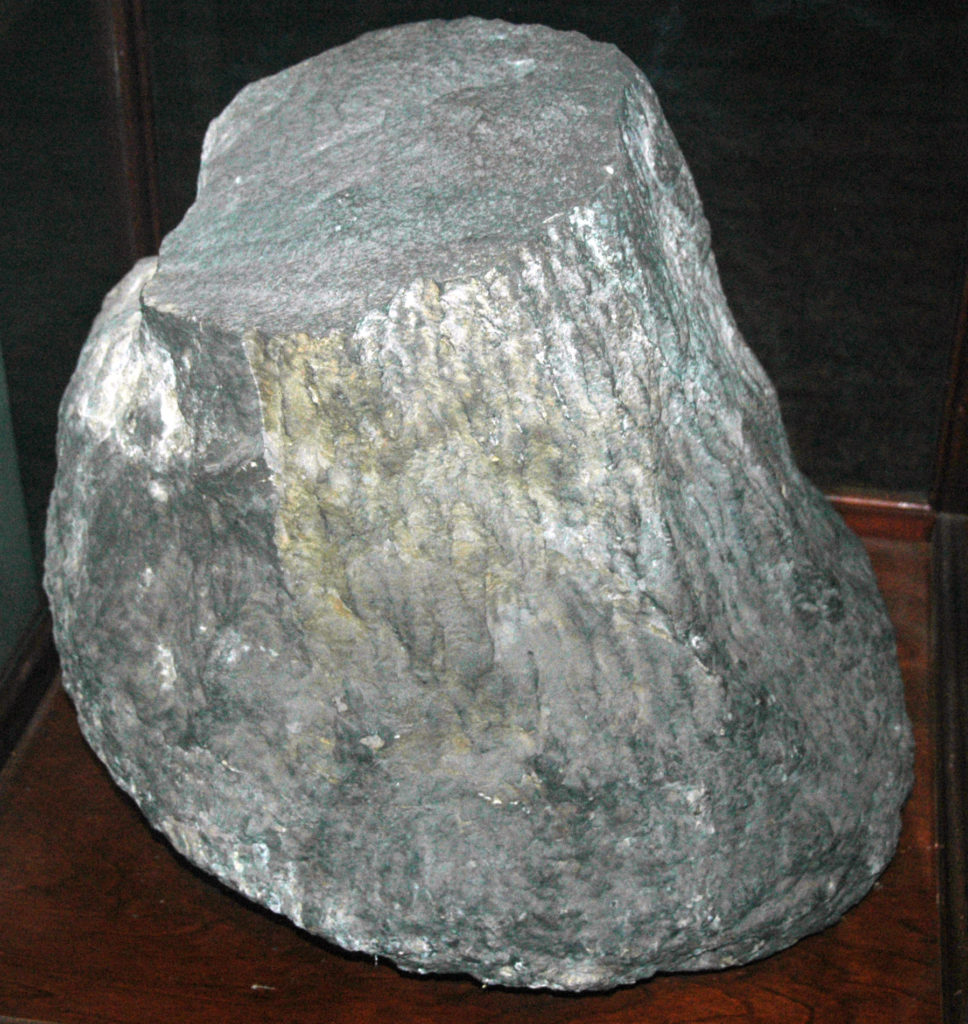
Further Reading
“The forest would have been quite open and its ancient trees would appear alien to the modern eye. A walker would have encountered clusters of Cladoxylopsid, a 10m-tall leafless tree with a swollen base, short branches resembling sticks of celery and shallow, ribbon-like roots.”
World’s oldest known fossil forest found in New York quarry, Hannah Devlin, The Guardian, December 2019.
